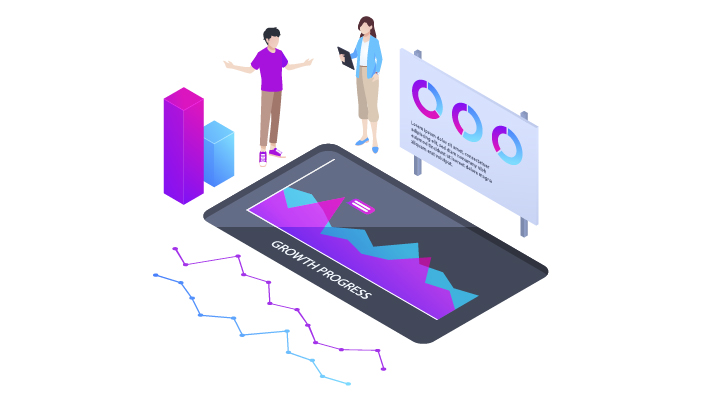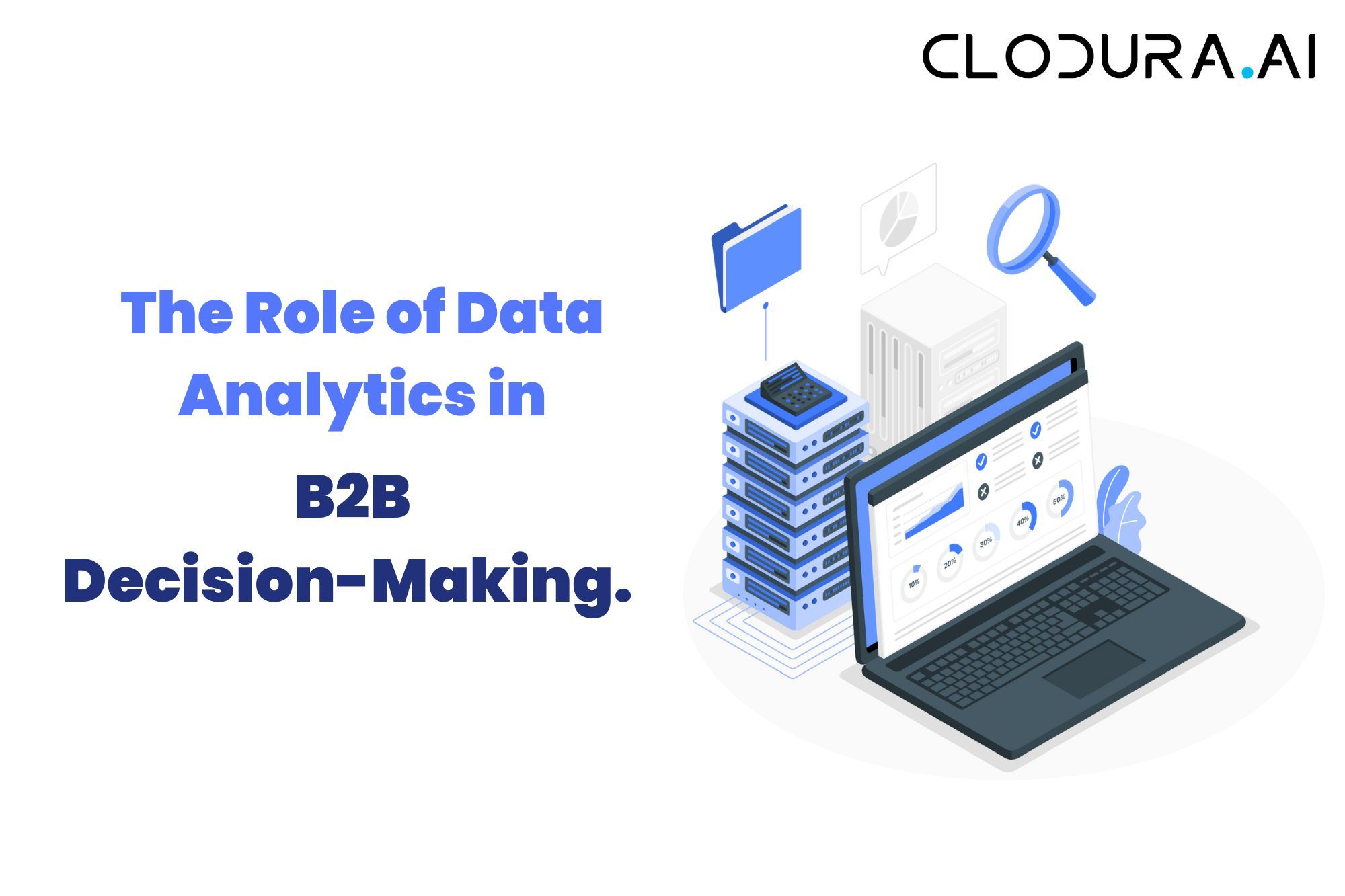Data is the new currency and one of the most valuable assets any company can possess. In today’s digital age, data is transforming various industries, and healthcare, banking, financial services, and insurance (BFSI), and retail sectors are not left out. These industries are experiencing a data-driven revolution that provides new insights, improves decision-making, and enhances customer experience.
The Growing Importance of Data in Key Industries
Data has become increasingly crucial in driving business success and providing value to customers. It has transformed industries, including healthcare, BFSI, and retail. Companies in these sectors are tapping into the power of data to drive innovation, improve services, and make informed decisions that drive growth.
● Healthcare Data Revolution
The healthcare industry is experiencing a data-driven revolution that is transforming the way healthcare is delivered. With the increasing adoption of electronic health records (EHRs), health systems can collect and analyze large volumes of patient data, leading to better outcomes. Telemedicine and remote patient monitoring have also provided more accessible healthcare services for patients and can improve clinical outcomes.
Predictive analytics has also played a monumental role in the healthcare industry. The ability to use machine learning algorithms to analyze patient data can facilitate early diagnosis of diseases, predict potential health risks, and improve treatment effectiveness. Predictive analytics enables doctors to make informed decisions, reduce errors, and provide personalized care.
Furthermore, data has played a significant role in the fight against the COVID-19 pandemic. With the help of data analytics and artificial intelligence, healthcare professionals were able to track the spread of the virus, predict hotspots, and develop effective treatment plans. The use of data has been instrumental in the development of vaccines, and it continues to play a vital role in managing the pandemic.

● BFSI Data-Driven Transformation
The BFSI industry is one of the most data-driven industries, where data is central to decision-making, customer acquisition, and retention. With fraud and financial crimes on the rise, BFSI companies leverage data analytics to detect fraudulent activities and take effective measures for prevention.
Data analytics also helps organizations assess and manage financial risks effectively, making strategic investments, and improving customer experiences. By incorporating data analytics into processes, BFSI companies can streamline operations, reduce costs, and drive growth.
Moreover, the BFSI industry is witnessing a significant transformation with the advent of fintech companies. These companies are leveraging data analytics to provide innovative financial products and services, making banking more accessible and convenient for customers.
● Retail Data Analytics for Success
In today’s rapidly-evolving retail industry, companies are using data analytics to enhance customer experiences, optimize inventory management, and improve sales performance. By leveraging customer data, retailers can develop personalized campaigns and offer individualized recommendations, thereby increasing customer satisfaction.
Inventory management and demand forecasting are some of the essential requirements in the retail industry. Data analytics contributes to real-time tracking of inventory, trends, identifying demand, and predicting future requirements. The omnichannel approach of retail aims to provide an integrated shopping experience to customers, irrespective of the channel they choose to use.
Furthermore, data analytics has also played a significant role in the rise of e-commerce. With the help of data, online retailers can provide personalized recommendations, optimize their supply chain, and improve the overall customer experience. The use of data has also facilitated the development of new business models, such as subscription-based services and direct-to-consumer sales.
Top 5 Future Trends in Data Analytics
Harnessing Healthcare Data
The massive adoption of EHRs has led to a massive volume of patient data. However, the data itself is of no use without effective data management. Data management enables healthcare professionals to extract meaningful insights from large data sets and make informed decisions.
Effective data management involves several steps, including data cleaning, data integration, data warehousing, and data analysis. Data cleaning involves identifying and correcting errors in the data, such as duplicate entries, missing values, and incorrect data types. Data integration involves combining data from multiple sources, such as EHRs, medical devices, and wearables, into a single, comprehensive data set. Data warehousing involves storing data in a centralized location, making it easily accessible to healthcare professionals. Data analysis involves using statistical and machine learning techniques to extract insights from the data.
● Electronic Health Records (EHRs)
EHRs contain essential information about the patient's medical history, including diagnoses, medications, and lab results. By integrating EHRs with data analytics, health professionals can improve clinical outcomes, minimize errors, and enhance patient experiences.
The centralization of EHRs has made it easier for healthcare professionals to view and manage patient data, enabling them to provide individualized care. The availability of relevant data also equips health professionals when making critical decisions regarding patient treatment.
EHRs also enable healthcare professionals to track patient outcomes over time, identify trends, and make data-driven decisions about patient care. For example, if a patient's lab results consistently show high cholesterol levels, healthcare professionals can use this information to develop a personalized treatment plan to manage the patient's cholesterol levels.
● Telemedicine and Remote Patient Monitoring
Telemedicine and remote patient monitoring have revolutionized healthcare by providing patients with remote access to healthcare services. Telemedicine enables patients to interact with health professionals remotely, resulting in improved accessibility to healthcare services, reduced costs, and improved treatment outcomes.
Remote patient monitoring uses medical devices and mobile technology to monitor a patient's health from their home. This provides doctors with real-time data, which they use to make informed decisions and provide timely care.
Telemedicine and remote patient monitoring are particularly beneficial for patients with chronic conditions, such as diabetes, hypertension, and heart disease. These patients require ongoing monitoring and management, and telemedicine and remote patient monitoring enable healthcare professionals to provide timely care and prevent complications.
● Predictive Analytics in Healthcare
Predictive analytics has become a vital tool in healthcare, enabling healthcare professionals to predict potential health risks and diagnose diseases before they occur. With the use of machine learning algorithms, healthcare professionals analyze patient data to identify possible health risks early and tailor treatment accordingly.
The application of predictive analytics also enables healthcare professionals to manage patient care more efficiently across a patient's healthcare journey, reducing the risk of complications and reducing costs.
For example, predictive analytics can be used to identify patients who are at high risk of hospital readmission. By identifying these patients early, healthcare professionals can develop a personalized care plan to prevent readmission, reducing healthcare costs and improving patient outcomes.
In conclusion, harnessing healthcare data is essential for improving patient outcomes, reducing healthcare costs, and enhancing the patient experience. By leveraging technologies such as EHRs, telemedicine, remote patient monitoring, and predictive analytics, healthcare professionals can extract meaningful insights from large data sets and make informed decisions about patient care.
BFSI Data Management and Analysis
The Banking, Financial Services, and Insurance (BFSI) sector is one of the most data-intensive sectors in the world. The sector must manage a colossal range of data, including customer data, investment data, and financial data. Effective data management is critical in decision-making, risk assessment, and fraud prevention.
BFSI companies collect and store vast amounts of data from various sources, including customers, employees, and third-party vendors. The data collected includes personal information, financial information, transaction data, and other sensitive information. Managing this data is critical to ensure that the data is accurate, secure, and accessible when needed.
● Fraud Detection and Prevention
Fraud prevention is one of the topmost concerns in the BFSI sector. Leveraging data analytics, BFSI companies can detect fraudulent activities, reduce financial losses, and prevent fraudulent activities. Data analytics tools can help BFSI companies identify patterns and anomalies in data that may indicate fraudulent activities.
Data analytics goes beyond detecting fraudulent activities; it enables companies to predict potential fraud risks and take effective measures to prevent such occurrences. BFSI companies can use predictive analytics to identify potential fraud risks and take proactive measures to prevent them.
● Risk Assessment and Management
Data analytics is a vital tool in risk assessment and management, enabling BFSI companies to make informed decisions, identify, and manage risk. By using data analytics, companies can identify patterns, assess risks, and mitigate potential losses. BFSI companies can use risk management tools to identify potential risks and take proactive measures to mitigate them.
Risk management also enables BFSI companies to identify and track potential business risks, making strategic investments and driving profitability. By understanding the risks associated with different investments, BFSI companies can make informed decisions and maximize their returns.
● Enhancing Customer Experience
By leveraging customer data, BFSI companies can develop personalized campaigns, improve customer experiences, and retain customer loyalty. Personalization enables companies to provide tailored services and products to customers, which results in increased customer satisfaction. BFSI companies can use customer data to understand customer behavior, preferences, and needs, and develop products and services that meet their requirements.
The availability of customer data also enables BFSI companies to develop targeted campaigns, reduce marketing costs, and drive growth. By understanding customer behavior and preferences, BFSI companies can develop targeted marketing campaigns that are more effective and efficient.
In conclusion, data management and analysis are critical to the success of BFSI companies. By leveraging data analytics tools, BFSI companies can detect fraud, identify and manage risks, and enhance customer experiences. Effective data management and analysis can help BFSI companies make informed decisions, reduce costs, and drive growth.
Retail Data for Personalization and Growth
The retail industry is an ever-evolving industry, where data analytics plays a significant role in providing personalized experiences, optimizing inventory management, and increasing sales performance.
● Customer Segmentation and Targeting
Data analytics enables retailers to understand customer behavior, preferences, and patterns, enabling them to develop personalized campaigns and individualized recommendations. By segmenting customers into different groups, retailers can develop targeted campaigns, drive growth, and retain customer loyalty.
● Inventory Management and Demand Forecasting
Inventory management and demand forecasting are critical in the retail industry. By leveraging data analytics, retailers can track inventory levels, identify trends, predict future requirements, and optimize inventory levels.
Data analytics also enables retailers to reduce inventory costs, increase efficiency, and improve overall operational efficiency.
● Omnichannel Retail Strategies
The omnichannel approach in retail aims to provide a seamless, integrated shopping experience to customers, regardless of the channel they choose to use. By leveraging customer data and analytics, retailers can develop a personalized omnichannel strategy, which enables them to provide smooth shopping experiences to customers.
The availability of relevant data enables retailers to predict customer needs, provide tailored recommendations, and retain customer loyalty.

Real-World Case Studies
Here are a few real-world case studies that exemplify the use of data analytics in different industries:
Healthcare:
1. Johns Hopkins Medicine (USA):
|
2. Ochsner Health System (USA):
|
BFSI:
1. Capital One (USA):
|
2. HDFC Bank (India):
|
Retail:
1. Amazon (Global):
|
2. Zara (Global):
|
These case studies demonstrate the diverse applications of data analytics in healthcare, BFSI, and retail, showcasing how organizations leverage data to achieve specific business objectives.
Emerging Technologies:
Here are some emerging technologies and tools in the field of data analytics relevant to healthcare, BFSI, and retail:
Healthcare:
1. Blockchain in Healthcare:
|
2. Edge Computing for Real-Time Data Analysis:
|
BFSI:
1. Explainable AI (XAI) for Fraud Detection:
|
2. Robotic Process Automation (RPA) for Data Management:
|
Retail:
1. Augmented Reality (AR) for Customer Experience:
|
2. Internet of Things (IoT) for Supply Chain Optimization:
|
These emerging technologies represent the forefront of innovation in data analytics. As industries continue to evolve, these tools offer new possibilities for improving processes, enhancing decision-making, and providing a competitive edge.
Challenges and Solutions:
Here are some common challenges that businesses may face in implementing data analytics strategies across various industries, along with practical solutions:
Challenge 1: Data Quality and Integration Issues
Challenge Description: Incomplete, inaccurate, or inconsistent data can hinder the effectiveness of analytics efforts. Integrating data from diverse sources can be complex.
Solution:
- Data Governance: Establish robust data governance practices to ensure data quality and integrity.
- Data Integration Platforms: Implement modern data integration platforms to streamline the integration process and ensure consistency.
Challenge 2: Lack of Skilled Personnel
Challenge Description: Shortage of skilled data scientists and analysts can impede the ability to derive actionable insights.
Solution:
- Training Programs: Invest in training programs to upskill existing staff or hire data science professionals.
- Collaboration: Foster collaboration between data scientists and domain experts to leverage industry-specific knowledge.
Challenge 3: Data Security and Privacy Concerns
Challenge Description: Handling sensitive customer information raises concerns about data security and privacy compliance.
Solution:
- Encryption and Anonymization: Implement robust encryption methods and anonymization techniques to protect sensitive data.
- Compliance Frameworks: Adhere to industry-specific data protection regulations and compliance frameworks.
Challenge 4: Integration with Legacy Systems
Challenge Description: Integrating advanced analytics with existing legacy systems can be challenging due to technological disparities.
Solution:
- Gradual Integration: Adopt an incremental approach to integrate analytics solutions with legacy systems.
- APIs and Middleware: Use APIs and middleware solutions to facilitate communication between new and existing systems.
Challenge 5: Resistance to Cultural Change
Challenge Description: Employees may resist adopting data-driven decision-making processes, especially in traditional organizational cultures.
Solution:
- Change Management Strategies: Implement change management strategies to cultivate a data-driven culture.
- Training and Awareness Programs: Educate employees about the benefits of data analytics and its positive impact on decision-making.
Challenge 6: Scalability Issues
Challenge Description: As data volumes grow, scalability becomes a concern, affecting the performance of analytics systems.
Solution:
- Cloud-Based Solutions: Consider migrating to cloud-based platforms that offer scalability and flexibility.
- Distributed Computing: Implement distributed computing frameworks to handle large datasets efficiently.
Challenge 7: ROI Measurement
Challenge Description: Measuring the return on investment (ROI) from data analytics initiatives can be challenging, especially in the short term.
Solution:
- Define Key Performance Indicators (KPIs): Clearly define and track KPIs aligned with business goals.
- Pilot Projects: Initiate small-scale pilot projects to demonstrate value before large-scale implementation.
Addressing these challenges requires a strategic and holistic approach. By recognizing and actively mitigating these issues, businesses can better leverage the power of data analytics to drive innovation and growth.
Conclusion
Data analytics has become an integral part of various industries, including healthcare, BFSI, and retail. By leveraging the power of data, companies can make informed decisions, improve services, and drive growth.
In healthcare, data analytics has enabled the delivery of more personalized care, improving patients' outcomes.
For BFSI, data analytics contributes to risk assessment and management, fraud detection and prevention, and enhancing customer experience.
For retail, data analytics improves inventory management, predictive analytics, and omnichannel retail strategies. In essence, data analytics is transforming industries, providing new insights and opportunities for growth.
FAQs
Q. Why is data important in key industries?
Data is important in key industries because it provides new insights, improves decision-making, and enhances customer experience. It has transformed industries such as healthcare, banking, financial services, insurance, and retail by driving innovation, improving services, and making informed decisions that drive growth.
Q. How is data revolutionizing the healthcare industry?
Data is transforming the healthcare industry by enabling the adoption of electronic health records (EHRs), telemedicine, remote patient monitoring, and predictive analytics. With EHRs, health systems can collect and analyze large volumes of patient data, leading to better outcomes. Telemedicine and remote patient monitoring provide more accessible healthcare services for patients and can improve clinical outcomes.
Q. How is data analytics being used in the BFSI industry?
The BFSI industry uses data analytics for fraud detection and prevention, financial risk management, strategic investments, and improving customer experiences. By incorporating data analytics into processes, BFSI companies can streamline operations, reduce costs, and drive growth. Fintech companies are also leveraging data analytics to provide innovative financial products and services, making banking more accessible and convenient for customers.
Q. How is data analytics being used in the retail industry?
In the retail industry, data analytics is being used to enhance customer experiences, optimize inventory management, and improve sales performance. By leveraging customer data, retailers can develop personalized campaigns and offer individualized recommendations, thereby increasing customer satisfaction.
Q. What is the importance of effective data management in the healthcare industry?
Effective data management is essential in the healthcare industry because the massive adoption of EHRs has led to a massive volume of patient data. Data management enables healthcare professionals to extract meaningful insights from large data sets and make informed decisions. It involves several steps, including data cleaning, data integration, data warehousing, and data analysis.


